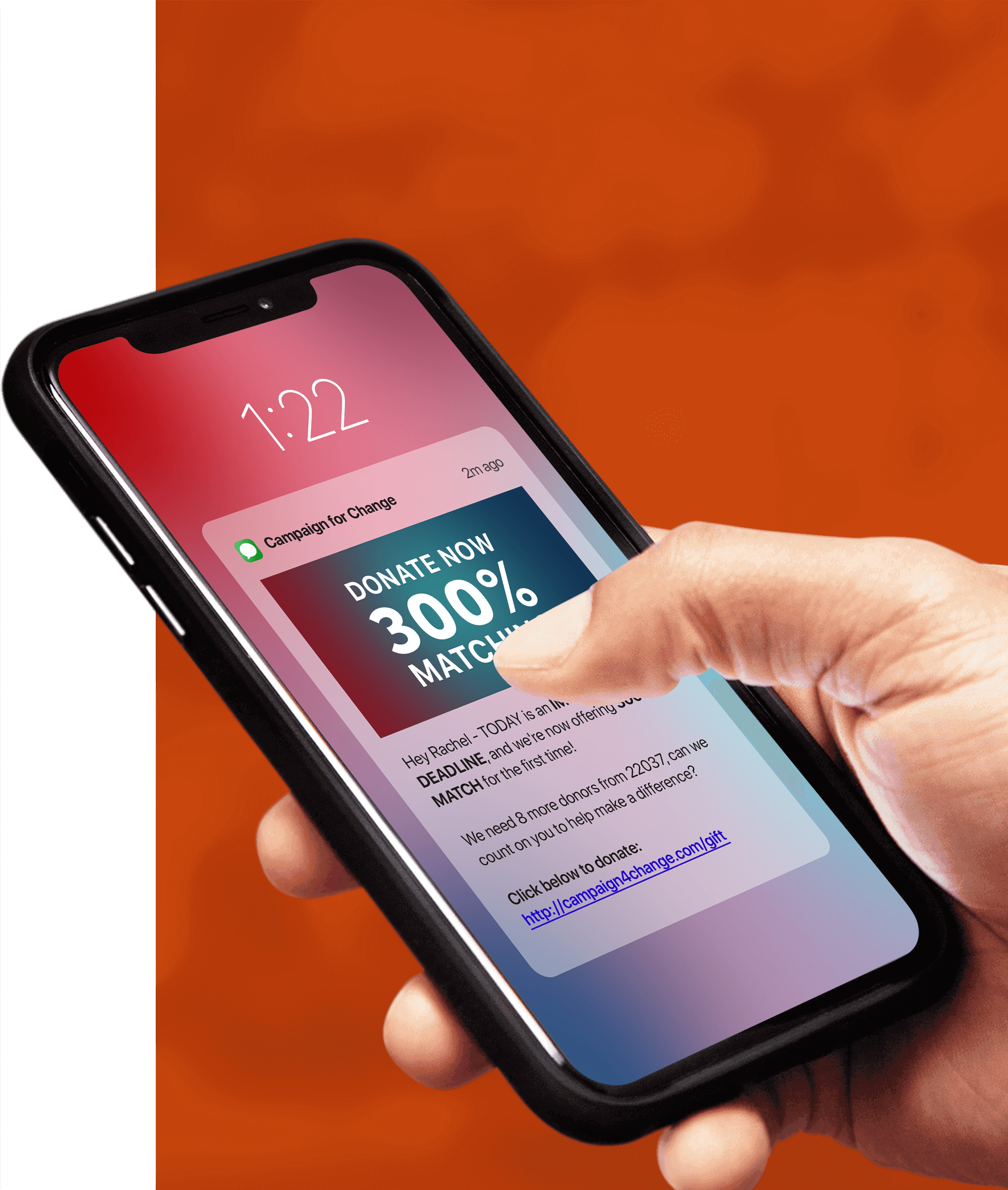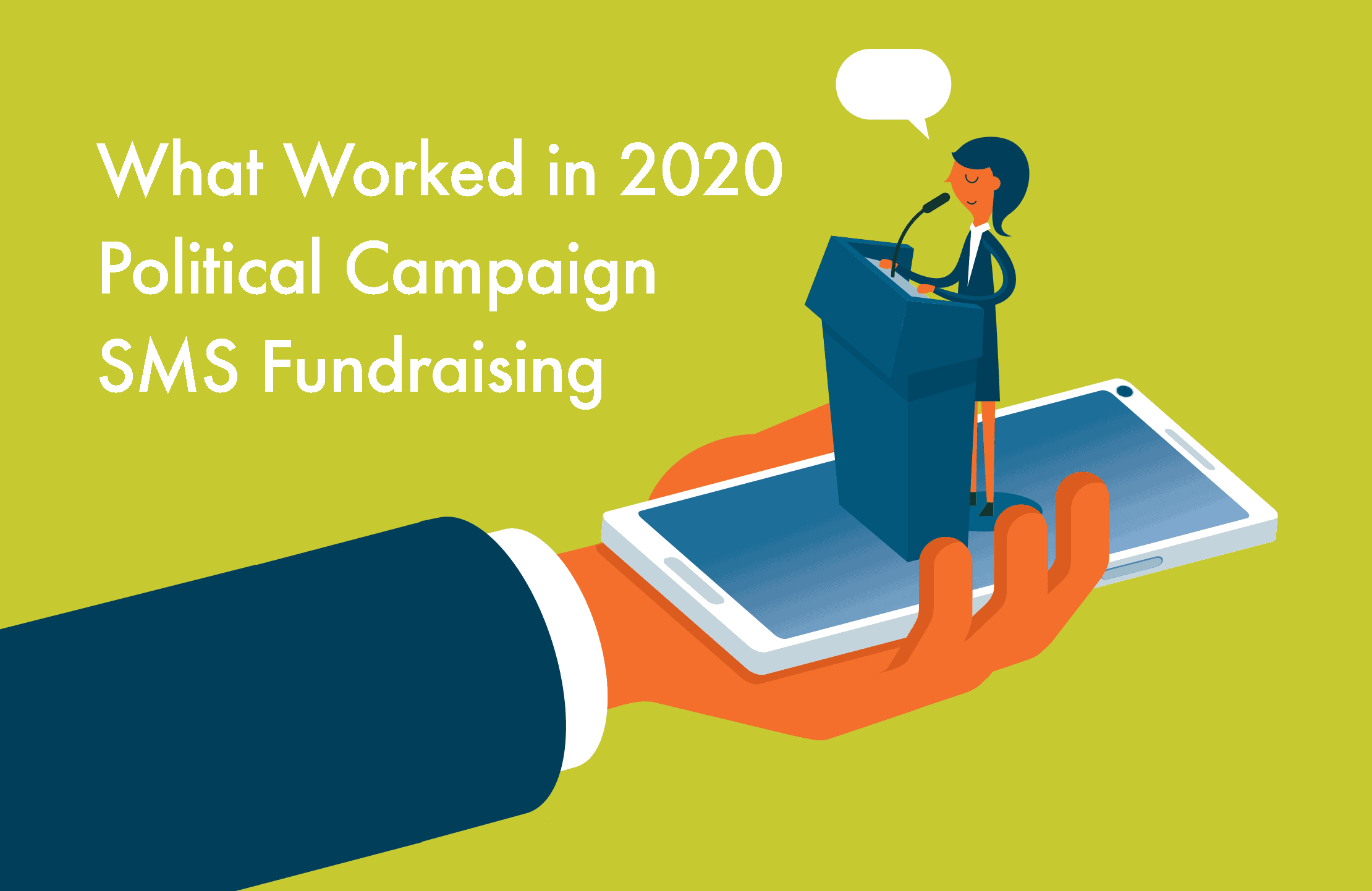
Voters received more political text messages than ever before in the 2020 elections. In October 2020, the last full month before the election, campaigns up and down the ballot sent more than 5 billion political text messages.
The secret is out: SMS political text messaging helps campaigns raise more donations, engage with constituents in real time, and increase voter turnout in the places that matter most. This blog post covers everything you might be wondering about fundraising with political text messages — included the most popular strategies from the 2020 election cycle.
Campaign Fundraising via Political Texting
In the 2020 presidential campaign, more candidates used political text messaging to raise funds than ever before. Text messaging helped raise small-dollar donations that easily accounted for up to almost half of the entire donations these candidates received. Of the text messages sent out by the 2020 presidential candidates, 45.71% were direct requests for donations.
Before text messaging, a supporter who wanted to send their candidate a donation would have to write a check, address an envelope, find a stamp, and drop it off at a mailbox or post office. Today, thanks to innovations in political text messaging, donating is as simple as a few taps on a cell phone screen, resulting in millions of dollars for political campaigns.
Tatango clients net an average of five dollars in donations for every dollar invested in building and operating a texting program using the Tatango platform. With an ROI that high in a competitive campaign trail, political text message marketing is essential for grassroots efforts.
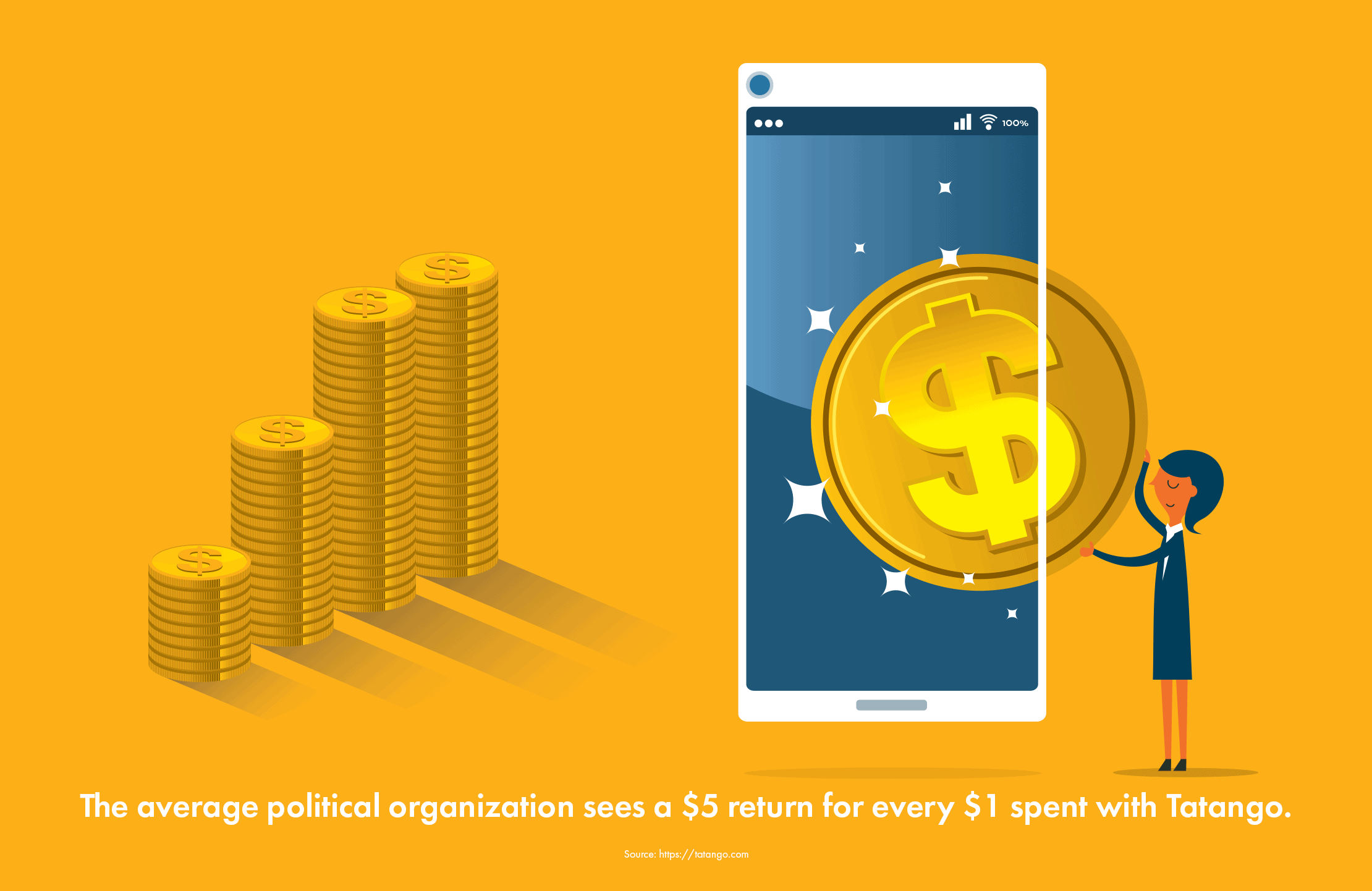
Understanding the Political Campaign Fundraising Landscape
First things first, let’s review a few essential components of political SMS marketing.
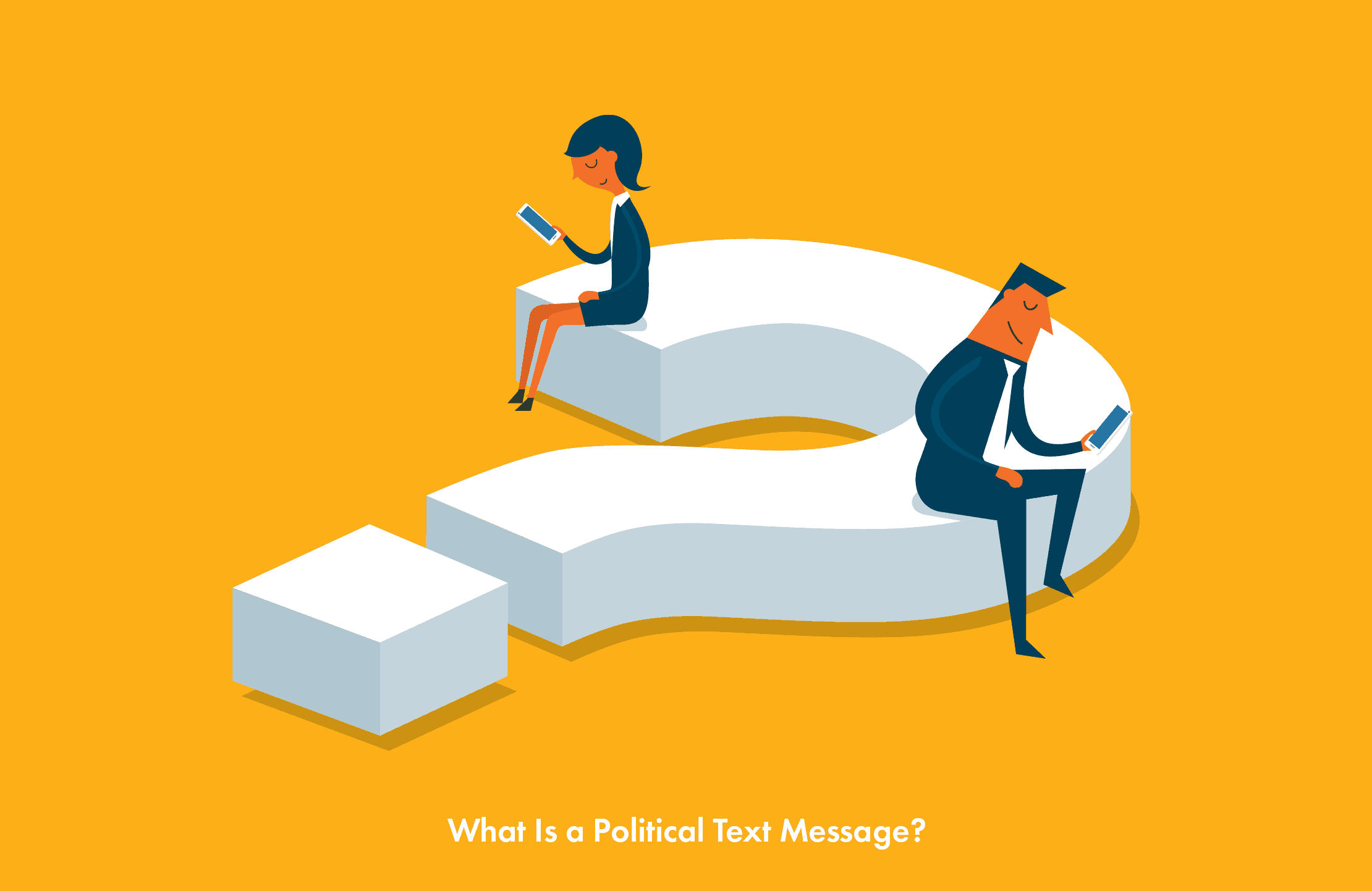
What Is a Political Text Message?
A political text message is any text message with a political theme or subject sent to an individual’s cell phone number. Campaigns and organizations can send text messages in various ways. In peer-to-peer (P2P) texting, a volunteer sends one text message to one phone number. In app-to-person (A2P) texting, a political campaign or organization uses a platform to send thousands of text messages in a short time to subscribers who have opted in to receive text messages.
What Laws Regulate Political Text Messages?
Political campaigns must follow the laws and regulations outlined by the Telephone Consumer Protection Act (TCPA) and enforced by the Federal Communications Commission (FCC). Violations of the TCPA can cost the sender up to $1,500 per unwanted message per recipient. Political groups and organizations must stay informed about text message marketing laws and work with a political SMS software provider with a solid understanding of the regulations.
The Cellular Telecommunications Industry Association (CTIA), a nonprofit trade association of wireless carriers, manufacturers, and providers of wireless products and services, has developed best practices. The CTIA is not a government agency. Violators won’t incur a fine, but failure to comply with CTIA guidelines may lead to the suspension of their short code. Most political campaigns use short codes, and this loss would be detrimental to your campaign.
Why Political Candidates Use Text Messages
In the 2016 presidential campaign, a mere 19% of voters said text messaging was the best way to reach them. Four years later, in the 2020 campaign, that number jumped to an incredible 78%.
Text messages have a 99% open rate, which is vastly superior to email open rates of around 18%. Social media algorithms show messages to just about 2% of your followers. Additionally, 90% of text messages are read within three minutes of being sent. It’s this kind of reach that allows political campaigns to connect with more voters, inspire them to get out the vote (GOTV), and raise millions in small-dollar donations.
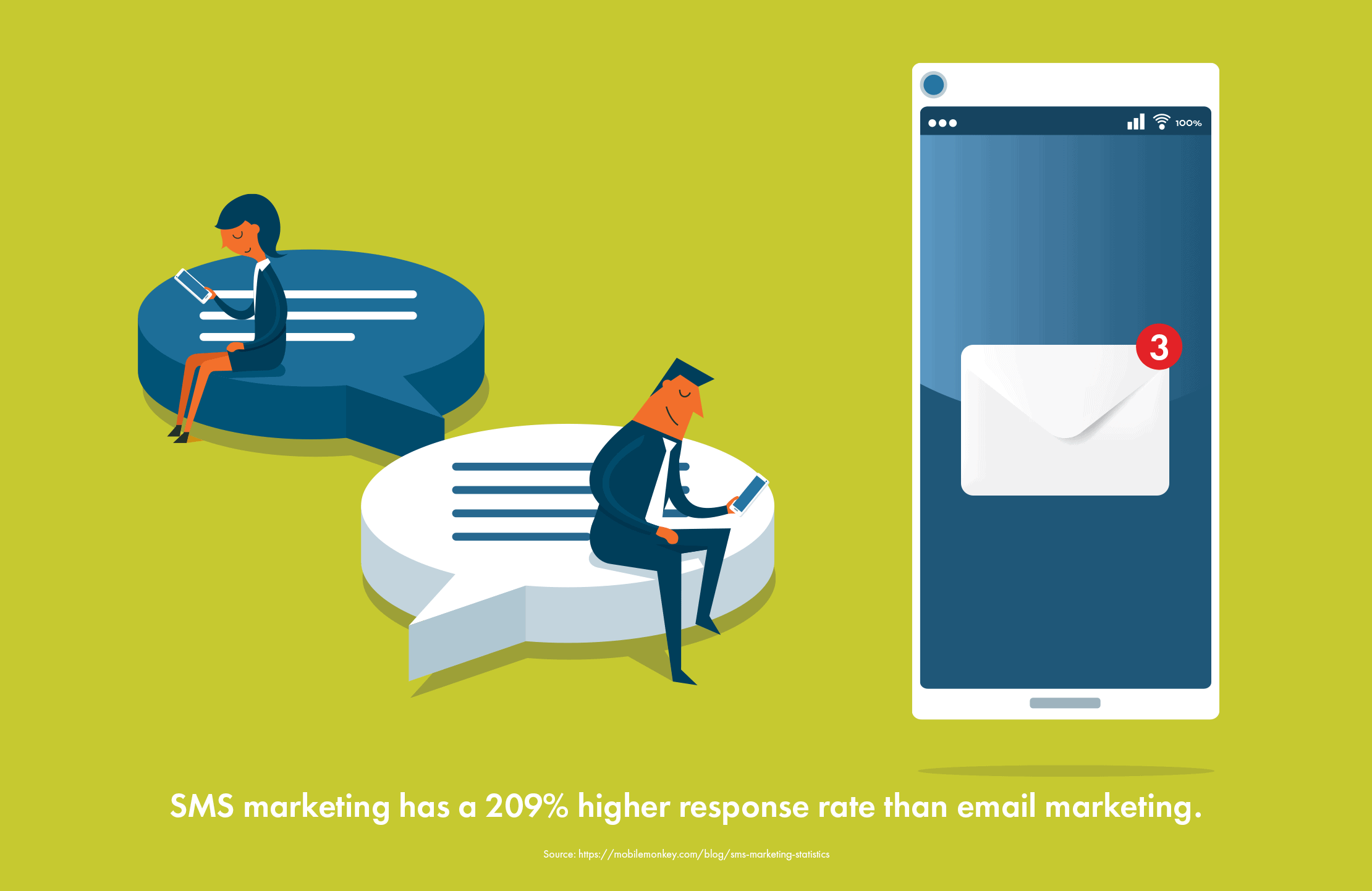
What Worked in the 2020 Election Season
In addition to fundraising, campaigns noticed several benefits of political text messaging.
Encouraging Voter Turnout
Data shows that SMS marketing has an impact on GOTV efforts—particularly in key constituencies and swing states. TechforCampaigns.org reported that people who received a political text message during the 2018 midterms were 1% more likely to vote. The report notes: “While 1% may not seem like a lot, competitive races, especially state legislative races, are decided by just tens or hundreds of votes. In one state alone, the difference between texted and untexted voters… would have been enough to win five of the seven races Democrats lost in 2018.”
Within that statistic, further research showed that constituents in the key demographic of registered voters aged 27 to 50 were 8% more likely to vote after receiving an A2P message. More than 95% of people in these age groups own a cell phone, so it’s no wonder that 6 out of 10 texts included some kind of GOTV messaging.
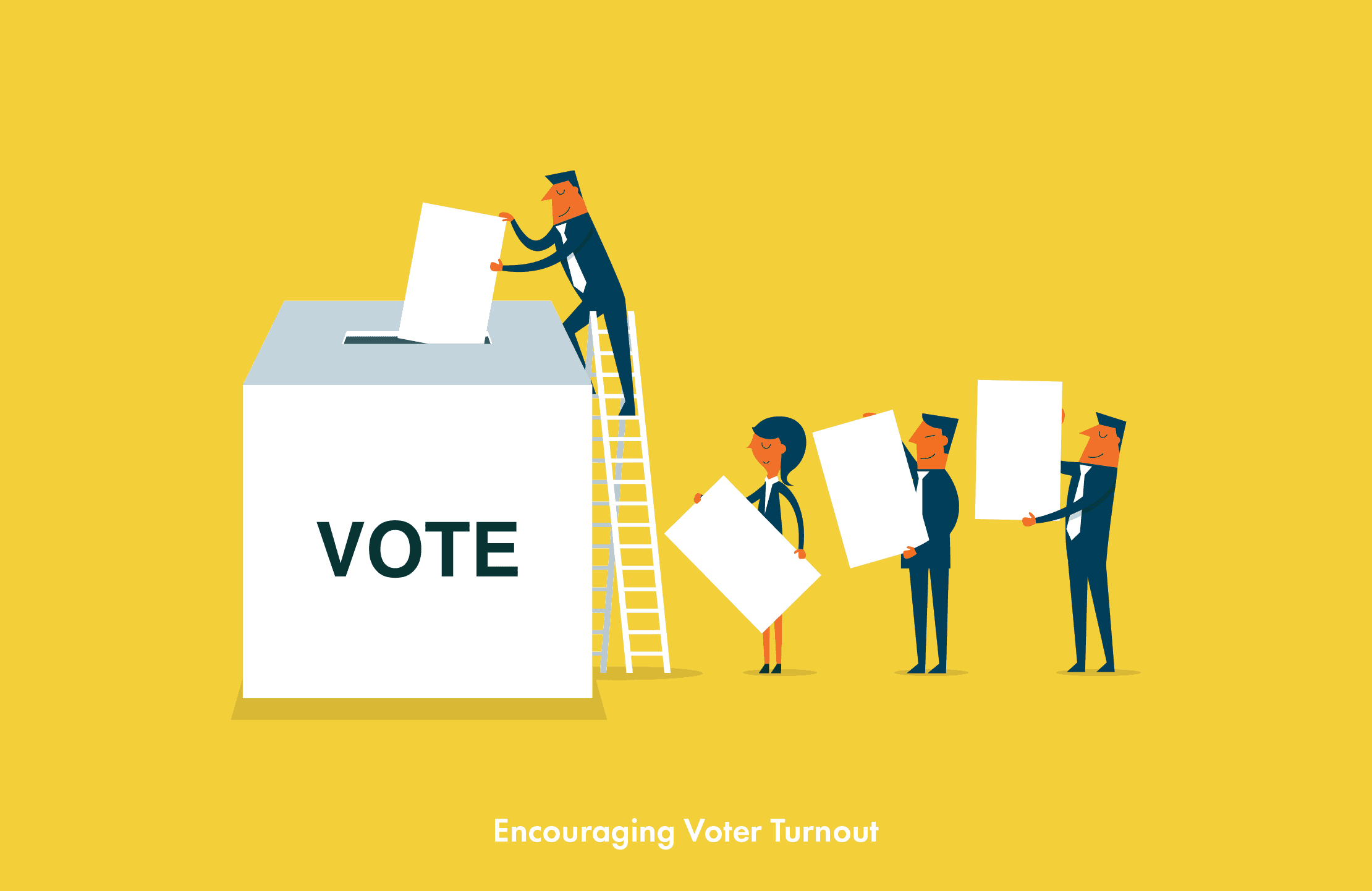
Inspiring Trust in Political Text Messages
Research also revealed that 54% of respondents said they would like to see a verification system that confirms a political text message is from a legitimate source. The more supporters trust the source, the more inclined they are to engage and feel called to take action.
In the final months of the 2020 election, a new entity called Campaign Verify started operating in the political text messaging arena. Campaign Verify is a nonpartisan service that verifies the identity of U.S. political campaigns, parties, and PACs. When a political campaign registers, Campaign Verify certifies that it represents the campaign in question. Wireless carriers can then verify the campaign’s legitimacy when it sends political text messages. Failure to comply with Campaign Verify may affect a campaign’s ability to transmit political text messages on some wireless platforms.
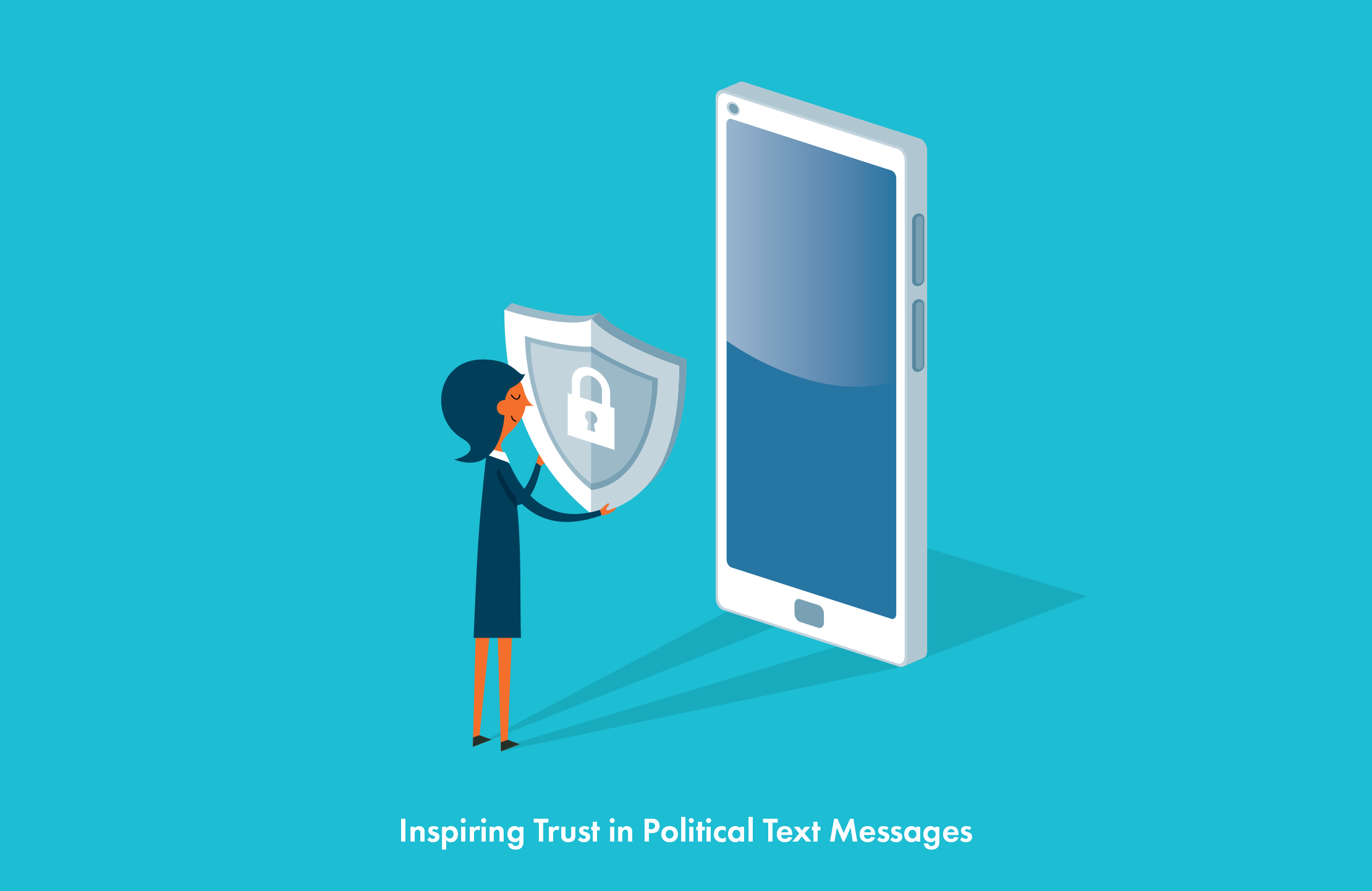
Personalizing Political Text Messages
In a survey by Mitto, 47% of respondents felt the political text messages they received were personalized. Personalization improves ROI for political groups and organizations using SMS marketing.
With the Tatango political text message marketing platform, campaigns can personalize text messages using merge tags to include a subscriber’s first name or other identifiers in the text message. Campaigns can also use merge tags to dynamically insert a subscriber’s state, city, zip code, or even custom subscriber data into the text messages.
Sending Political Text Messages After the Election
Political groups and candidates sent 270 million text messages in the days following the election, from November 4 to November 9. These messages kept supporters engaged, informed about election results, and proud to have participated. In fact, 50% of respondents said their favorite type of text message was a thank-you text for voting.
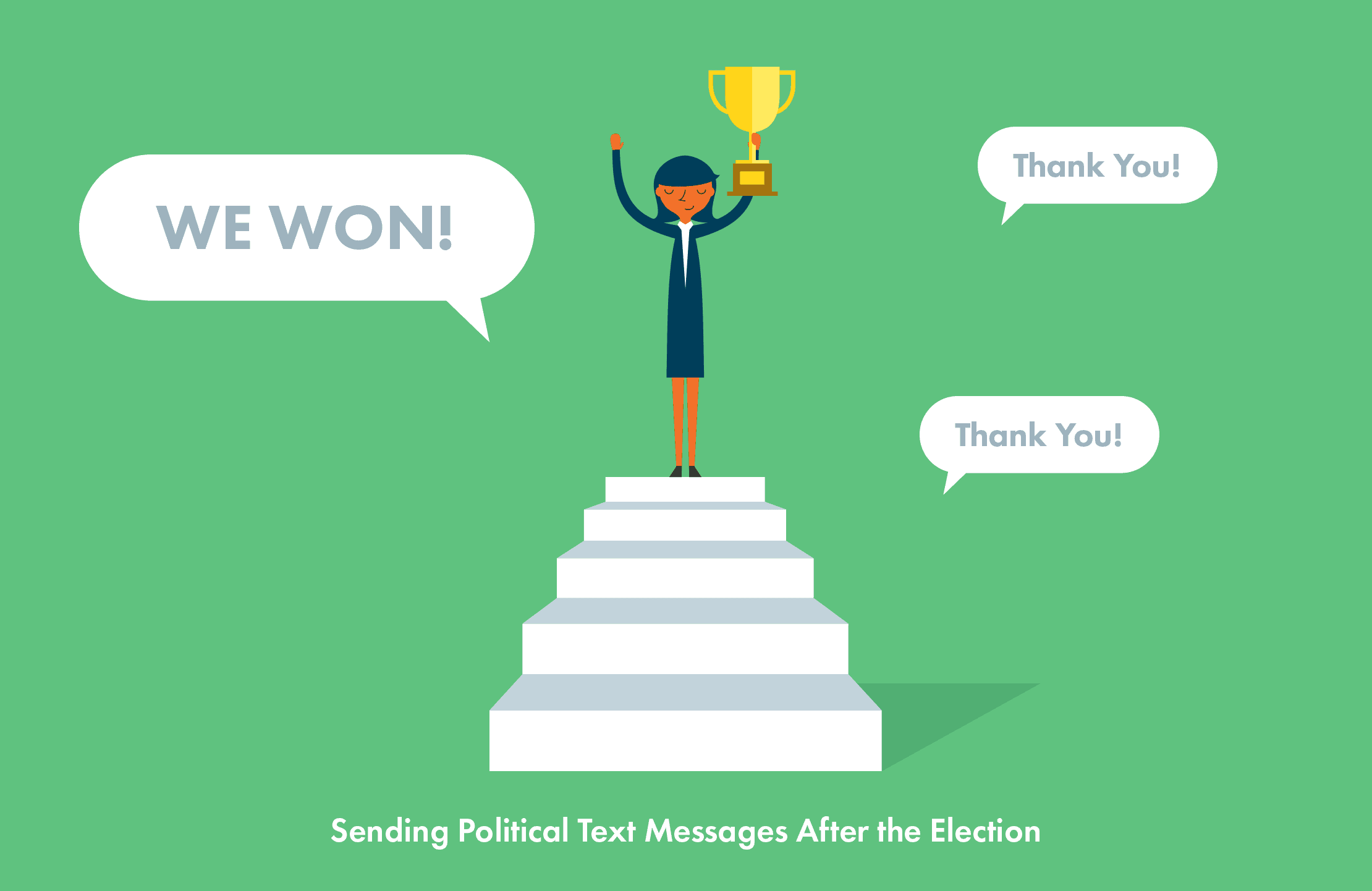
Other Uses of Political Text Messaging
From analyzing the 2020 election, we suggest several techniques to improve your subscriber engagement, voter turnout, and more.
Send weekly reminders: Weekly reminders with volunteer opportunities, donation requests, and voting instructions are helpful. Not only do campaigns keep their audience engaged, but they also make sure that every individual on their list has a chance to participate. Tatango’s merge tags and segmentation features allow campaigns to send personalized messages to regional areas as small as a single zip code.
Message subscribers about important issues: When constituents can relate and respond to topics they’re interested in, their engagement increases. We recommend segmenting the subscriber list by causes or sending updates after important campaign events to keep supporters engaged. Zeroing in on local issues can help a campaign win a national election.
Use eye-catching MMS text messages: Multimedia messaging services (MMS) allow more characters and can include GIFs, audio files, QR codes, videos, or a subject line to capture the recipient’s attention.
According to Business.com: “… On average, an MMS campaign has 15–20% more engagement than an SMS campaign. MMS messages are 10 times as likely to be shared on social media channels than SMS messages. Marketing messages with visuals are also 43% more persuasive than messages with text alone.”
Start Fundraising Now with Political Texting
Political text messaging plays an ever-increasing role in U.S. elections. If you’re an organization looking to tap into the power of text messaging contact our SMS marketing experts today.

